A "negative image of space" refers to an image where the usual light and dark areas are inverted. In the context of space imagery, this means that stars, galaxies, and other celestial bodies typically appear dark against a bright background, while the space itself appears bright instead of dark. This inversion can create striking visual effects and highlight different features of celestial objects. Here’s how you can understand or create a negative image of space:
1. **Contrast Inversion**: A negative image inverts the brightness and colors of the original image. Bright areas become dark, and dark areas become bright.
2. **Features Highlighted Differently**: In a negative image, certain features may become more prominent. For example, faint nebulae or gas clouds might stand out more clearly against the now-bright background.
3. **Artistic and Analytical Use**: Negative images are often used for artistic purposes or in scientific analysis to detect and study features that are less visible in standard images.
4. **Creating Negative Images**: Negative images can be created using photo-editing software. Tools like Adobe Photoshop, GIMP, or even basic image editors often have an "invert" option that can produce a negative image.
Here’s an example of how you might create a negative image of space using a photo-editing tool:
1. **Open the Image**: Load your space image into the photo-editing software.
2. **Select Invert Option**: Look for an option called "Invert" or "Negative." This is usually found under color adjustments or effects.
3. **Apply the Effect**: Apply the invert effect to transform the image into its negative form.
4. **Adjust as Needed**: You can further adjust the brightness, contrast, and color balance to highlight specific features.
This process allows you to explore and appreciate celestial images in a new way, revealing details that might be overlooked in their standard presentation.
NASA captures stunning images of space, and some have been converted into negative images to highlight different features. Here are ten notably
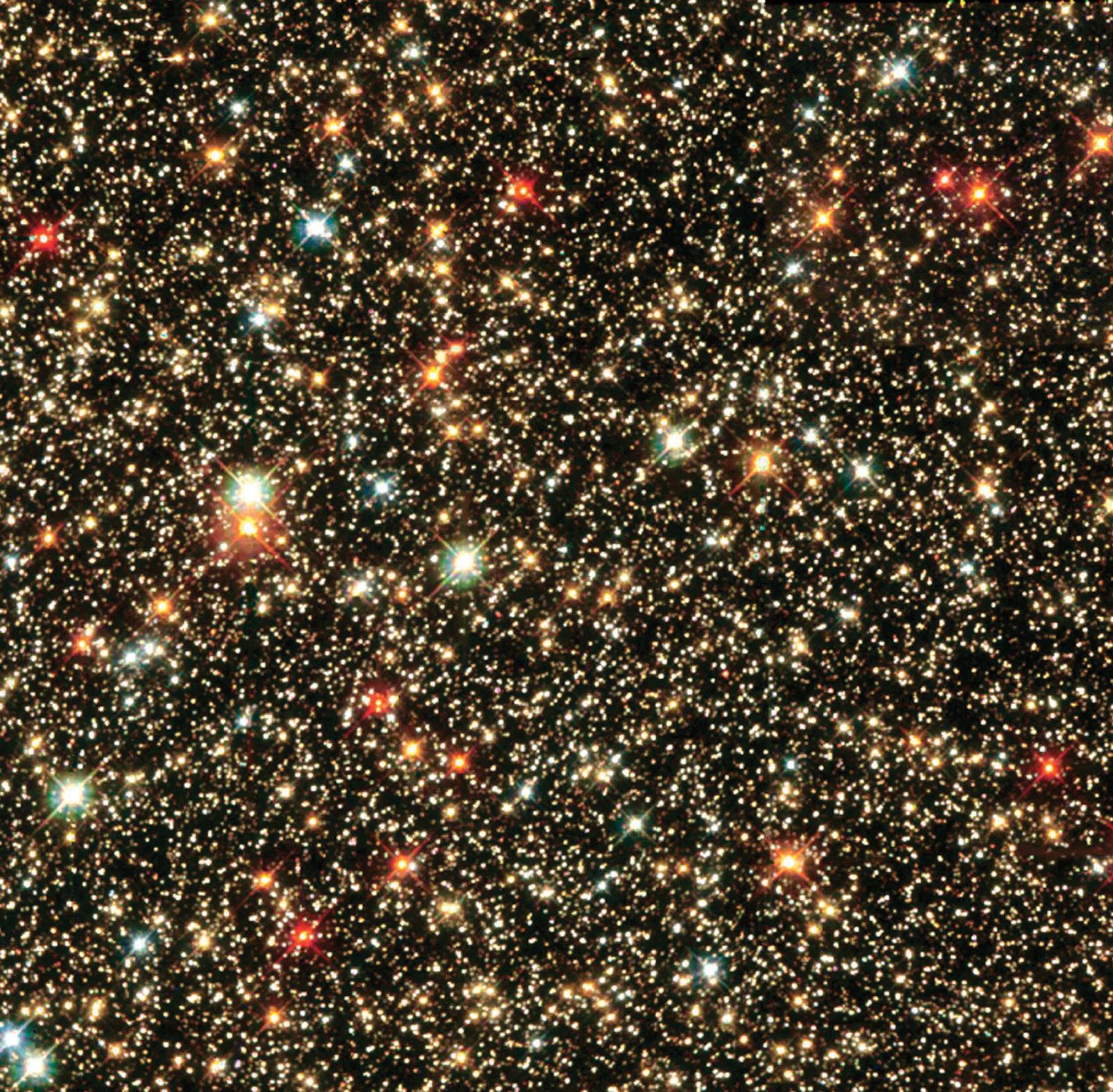 1. **Hubble Deep Field**: A negative image of this deep field view reveals distant galaxies and faint objects more prominently.The Hubble Deep Field (HDF) is a landmark observation conducted by the Hubble Space Telescope (HST) in 1995. It is one of the most famous images in astronomy and has revolutionized our understanding of the universe.
1. **Hubble Deep Field**: A negative image of this deep field view reveals distant galaxies and faint objects more prominently.The Hubble Deep Field (HDF) is a landmark observation conducted by the Hubble Space Telescope (HST) in 1995. It is one of the most famous images in astronomy and has revolutionized our understanding of the universe.### What is the Hubble Deep Field?
1. **Observation**: The HDF is a deep-sky observation made by pointing the Hubble Space Telescope at a seemingly empty patch of sky in the constellation Ursa Major and taking a long exposure photograph.
2. **Duration**: The observation lasted for 10 consecutive days, accumulating a total exposure time of about 1 million seconds.
3. **Result**: The HDF revealed thousands of galaxies, including some of the most distant and ancient galaxies ever observed, dating back to just a few hundred million years after the Big Bang.
4. **Impact**: The HDF transformed our understanding of the early universe, showing that galaxies were much more common in the early universe than previously thought.
### Legacy of the Hubble Deep Field
1. **Follow-up Observations**: The HDF has been followed by several other deep-field observations by Hubble and other telescopes, such as the Hubble Ultra-Deep Field (HUDF) and the Hubble eXtreme Deep Field (XDF), revealing even more distant and ancient galaxies.
2. **Scientific Discoveries**: The HDF and its follow-up observations have led to numerous scientific discoveries about galaxy formation and evolution, the history of the universe, and the nature of dark matter and dark energy.
3. **Public Engagement**: The HDF has captured the public's imagination and has become a symbol of the vastness and beauty of the universe, inspiring people around the world to learn more about astronomy and space exploration.
Overall, the Hubble Deep Field is a testament to the power of the Hubble Space Telescope and its ability to uncover the mysteries of the universe, making it one of the most important images in the history of astronomy.
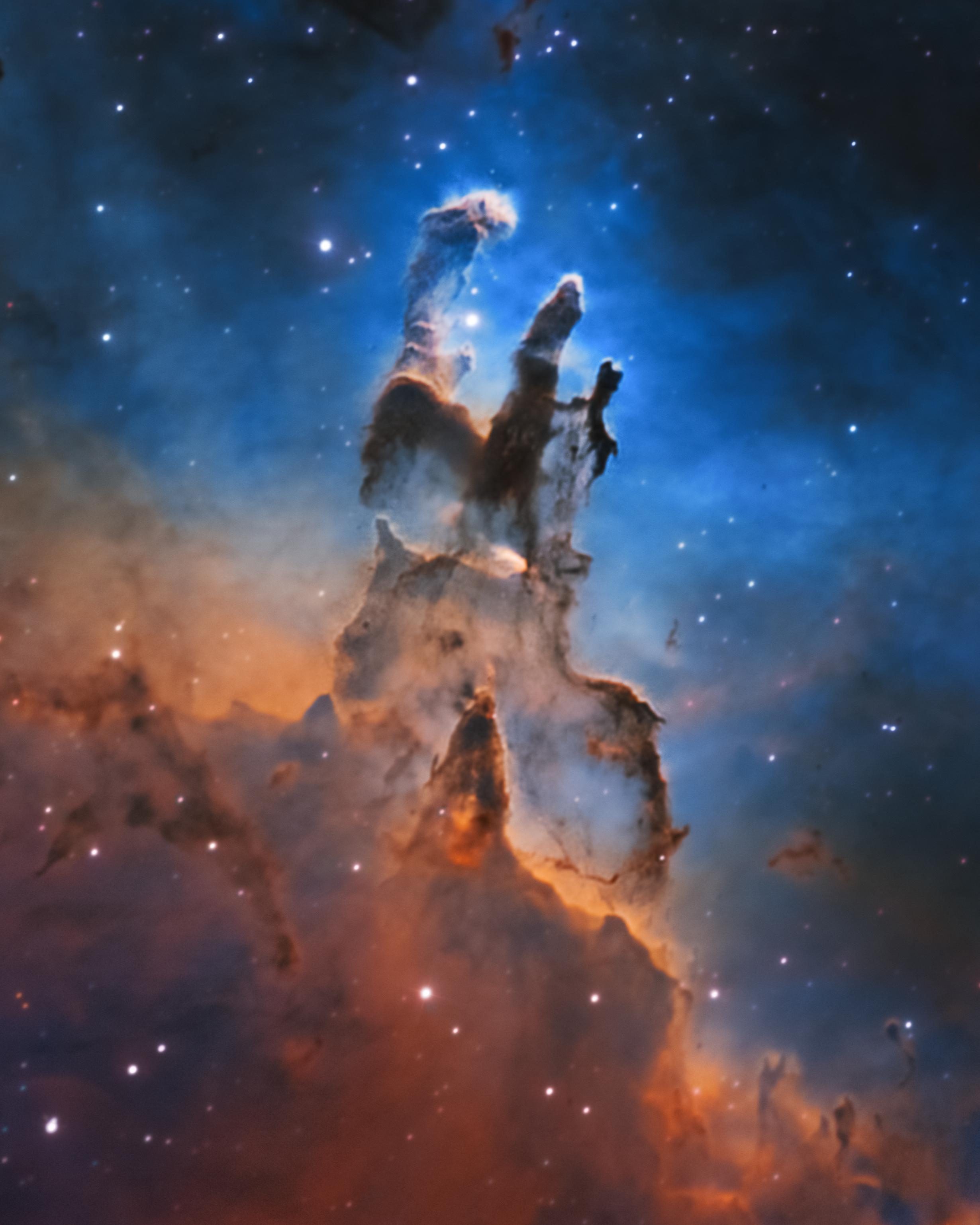 2. **Pillars of Creation**: Inverting this iconic image from the Eagle Nebula highlights the intricate structures of gas and dust.The Pillars of Creation is a photograph taken by the Hubble Space Telescope of elephant trunks of interstellar gas and dust in the Eagle Nebula, specifically the Serpens constellation, some 7,000 light years from Earth. It was taken in 1995 and has become one of the most iconic images in astronomy.
2. **Pillars of Creation**: Inverting this iconic image from the Eagle Nebula highlights the intricate structures of gas and dust.The Pillars of Creation is a photograph taken by the Hubble Space Telescope of elephant trunks of interstellar gas and dust in the Eagle Nebula, specifically the Serpens constellation, some 7,000 light years from Earth. It was taken in 1995 and has become one of the most iconic images in astronomy. The pillars are part of a larger region of star formation and are so named because the gas and dust are in the process of creating new stars. The tallest pillar in the image is about four light years long. These structures are being sculpted by ultraviolet radiation and stellar winds from nearby young, massive stars.
This image has not only provided a stunning view of the cosmos but also valuable insights into the processes of star formation and the dynamics of interstellar gas clouds.
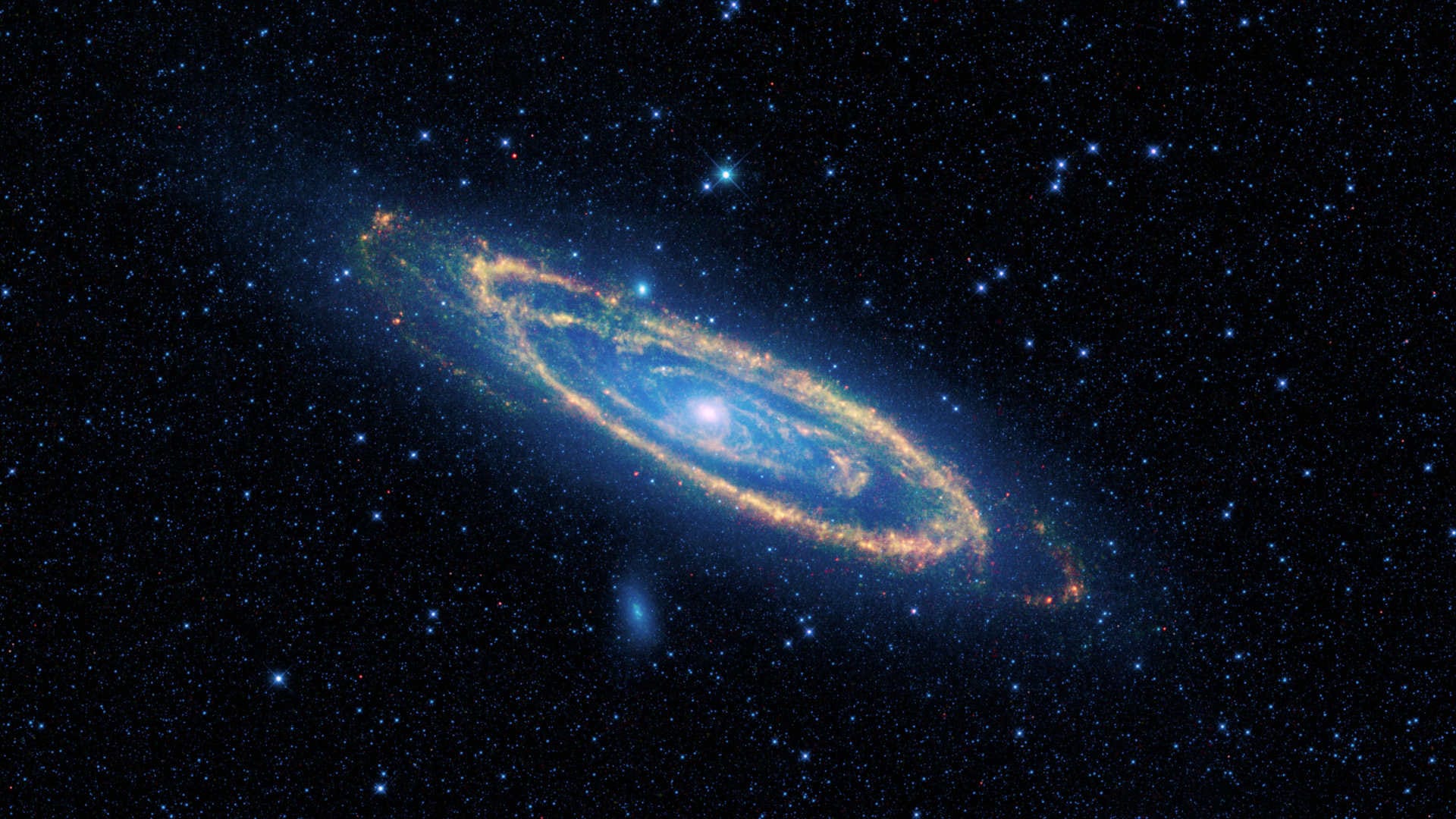 3. **Andromeda Galaxy**: A negative image emphasizes the spiral structure and dust lanes of our neighboring galaxy.The Andromeda Galaxy, also known as Messier 31 (M31), is a spiral galaxy located approximately 2.537 million light-years away from Earth in the Andromeda constellation. It is the closest spiral galaxy to the Milky Way, making it one of the most studied and well-known galaxies in the night sky.
3. **Andromeda Galaxy**: A negative image emphasizes the spiral structure and dust lanes of our neighboring galaxy.The Andromeda Galaxy, also known as Messier 31 (M31), is a spiral galaxy located approximately 2.537 million light-years away from Earth in the Andromeda constellation. It is the closest spiral galaxy to the Milky Way, making it one of the most studied and well-known galaxies in the night sky.### Key Features of the Andromeda Galaxy:
1. **Size and Mass**: Andromeda is the largest galaxy in the Local Group, which also includes the Milky Way, the Triangulum Galaxy, and about 54 other smaller galaxies. It is estimated to contain around 1 trillion stars, making it more massive than the Milky Way.
2. **Structure**: The galaxy has a spiral structure with several spiral arms emanating from a central bulge. It also has a prominent central bar structure, similar to the Milky Way.
3. **Satellite Galaxies**: Andromeda is surrounded by a large number of satellite galaxies, similar to the Milky Way's Magellanic Clouds. Some of the most notable satellite galaxies of Andromeda include M32 and M110.
4. **Interaction with the Milky Way**: Andromeda and the Milky Way are on a collision course and are expected to collide in about 4.5 billion years. This event will result in the formation of a single, larger galaxy often referred to as Milkomeda or Milkdromeda.
5. **Observational History**: Andromeda has been known since ancient times and was first recorded as a nebulous object by Persian astronomer Abd al-Rahman al-Sufi around 964 AD. It was later cataloged by Charles Messier in 1764.
6. **Distance Measurement**: The distance to the Andromeda Galaxy was first accurately measured using variable stars by Edwin Hubble in 1923, which established it as a separate galaxy outside of the Milky Way.
7. **Future Observation**: Andromeda is a popular target for amateur and professional astronomers due to its size, brightness, and proximity. It is visible to the naked eye under dark skies and appears as a faint, elongated patch of light.
The Andromeda Galaxy is a fascinating object of study in astronomy and provides valuable insights into the nature and evolution of galaxies. Its collision with the Milky Way in the distant future will be a spectacular event in the cosmos, reshaping both galaxies in profound ways
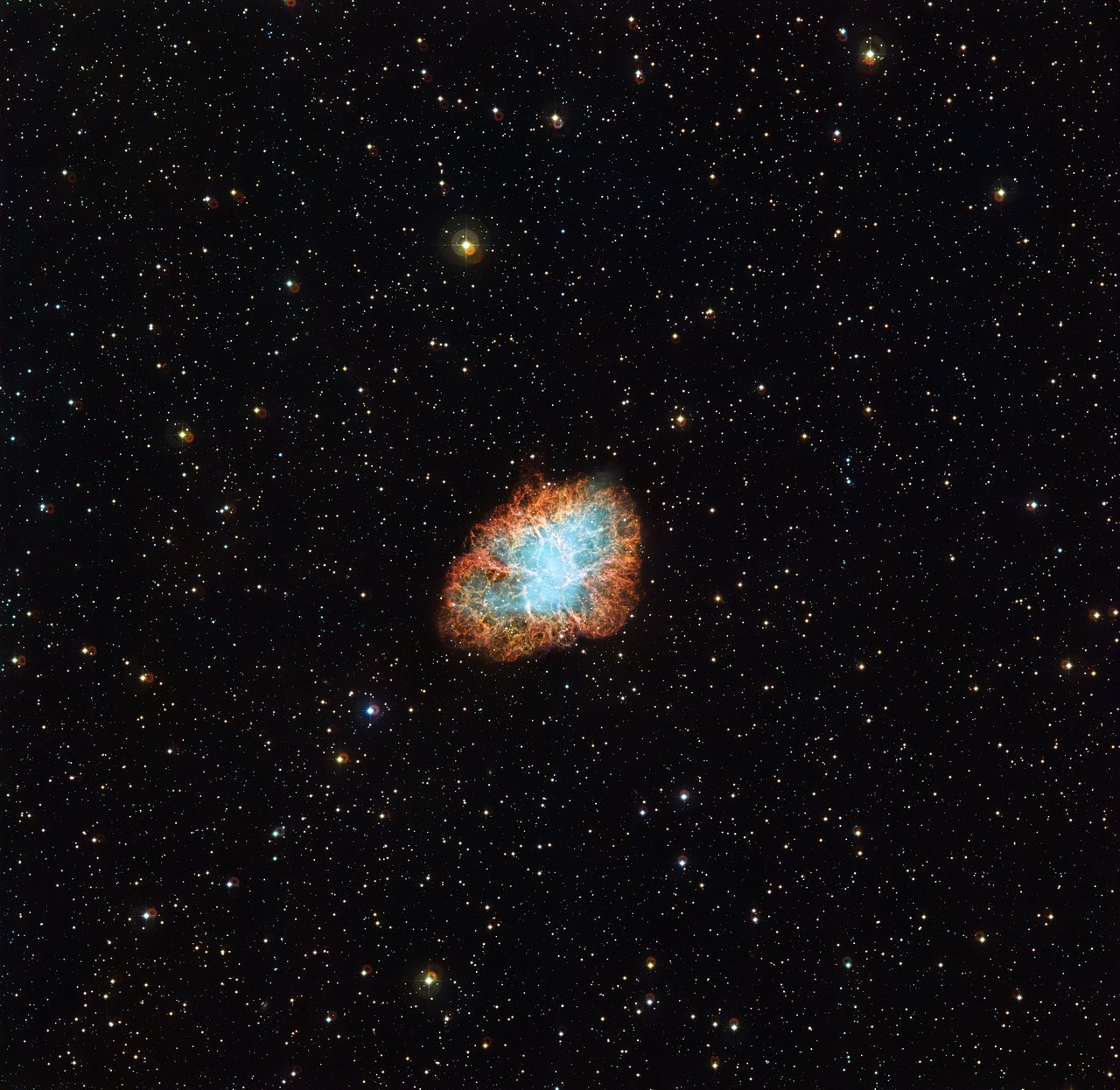 4. **Crab Nebula**: The negative view can show the detailed filamentary structure of this supernova remnant.The Crab Nebula, also known as Messier 1 (M1), is a supernova remnant located in the constellation Taurus. It is one of the most studied and famous remnants of a supernova explosion, which was observed and recorded by Chinese astronomers in 1054 AD.
4. **Crab Nebula**: The negative view can show the detailed filamentary structure of this supernova remnant.The Crab Nebula, also known as Messier 1 (M1), is a supernova remnant located in the constellation Taurus. It is one of the most studied and famous remnants of a supernova explosion, which was observed and recorded by Chinese astronomers in 1054 AD.### Key Features of the Crab Nebula:
1. **Origin**: The Crab Nebula was formed from the remnants of a supernova explosion that was observed on Earth in 1054 AD. This explosion resulted in the death of a massive star, which collapsed and then exploded, ejecting its outer layers into space.
2. **Structure**: The Crab Nebula has a complex and dynamic structure, consisting of a central pulsar (a rapidly rotating neutron star), surrounded by a nebula of gas and dust that is expanding outward at a rate of about 1,500 kilometers per second.
3. **Pulsar**: At the center of the Crab Nebula is the Crab Pulsar, a neutron star that is spinning rapidly, emitting beams of radiation that are observed as pulses of light. The pulsar is believed to be the remains of the original star's core, which collapsed during the supernova explosion.
4. **Observational History**: The Crab Nebula has been a source of fascination for astronomers since its discovery. It was first identified as a nebulous object by English astronomer John Bevis in 1731. Charles Messier independently rediscovered it in 1758 and included it as the first entry in his catalog of non-stellar objects.
5. **Crab Nebula as a Standard Candle**: The Crab Nebula is used as a standard candle in astronomy, meaning that its brightness is relatively consistent and can be used to calibrate the distance to other celestial objects.
6. **Supernova Remnant Studies**: The Crab Nebula has been extensively studied across the electromagnetic spectrum, from radio waves to gamma rays, providing valuable insights into the processes of supernova explosions, neutron star formation, and the dynamics of interstellar gas and dust.
7. **Visibility**: The Crab Nebula is a popular target for amateur astronomers with telescopes, as it is relatively easy to observe with a moderate-sized telescope under dark skies. It appears as a faint, fuzzy patch of light.
Overall, the Crab Nebula is a fascinating object that continues to provide valuable insights into the nature of supernova explosions, neutron stars, and the evolution of galaxies.
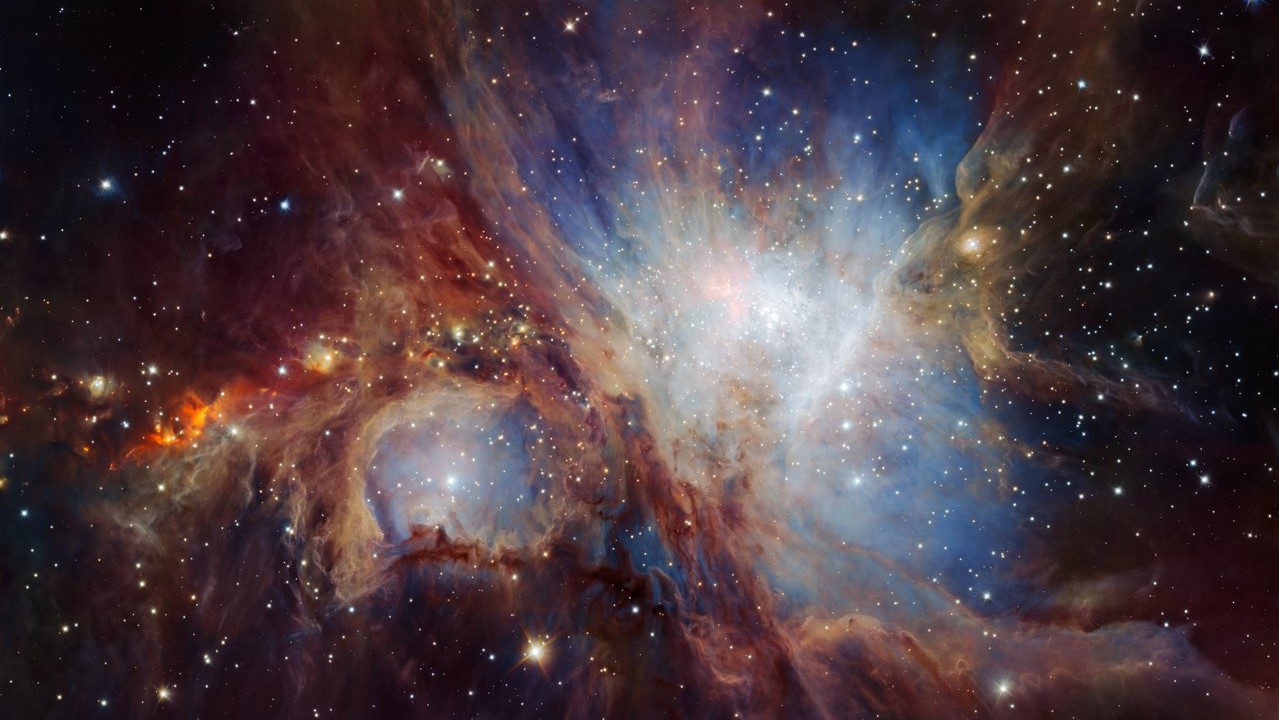 5. **Orion Nebula**: Inversion brings out the different layers of gas and star-forming regions within this bright nebula.The Orion Nebula, also known as Messier 42 (M42), is a diffuse nebula located in the Orion constellation. It is one of the brightest and most spectacular nebulae in the night sky, visible to the naked eye as a fuzzy patch of light below Orion's Belt. Here are some key features of the Orion Nebula:
5. **Orion Nebula**: Inversion brings out the different layers of gas and star-forming regions within this bright nebula.The Orion Nebula, also known as Messier 42 (M42), is a diffuse nebula located in the Orion constellation. It is one of the brightest and most spectacular nebulae in the night sky, visible to the naked eye as a fuzzy patch of light below Orion's Belt. Here are some key features of the Orion Nebula:### Key Features of the Orion Nebula:
1. **Location**: The Orion Nebula is located in the "sword" of the Orion constellation, which hangs below the three bright stars that form Orion's Belt.
2. **Distance**: The Orion Nebula is relatively close to Earth, at a distance of about 1,344 light-years.
3. **Size**: The nebula is enormous, spanning about 24 light-years across.
4. **Young Stars**: The Orion Nebula is a stellar nursery, where new stars are actively being formed. It is home to a large population of young stars, including several massive stars known as the Trapezium Cluster.
5. **Emission Nebula**: The nebula is primarily an emission nebula, meaning it emits light due to the ionization of hydrogen gas by nearby young, hot stars.
6. **Observational History**: The Orion Nebula has been known since ancient times and is one of the few nebulae visible to the naked eye. It was first cataloged by French astronomer Nicolas-Claude Fabri de Peiresc in 1610, and later observed by many famous astronomers including William Herschel and Charles Messier.
7. **Visibility**: The Orion Nebula is a popular target for amateur astronomers, as it is easily visible with binoculars or a small telescope. Its bright glow and intricate structure make it a stunning sight in the night sky.
Overall, the Orion Nebula is not only a beautiful object to observe but also a crucial area of study for astronomers, providing insights into the processes of star formation and the evolution of young stellar systems.
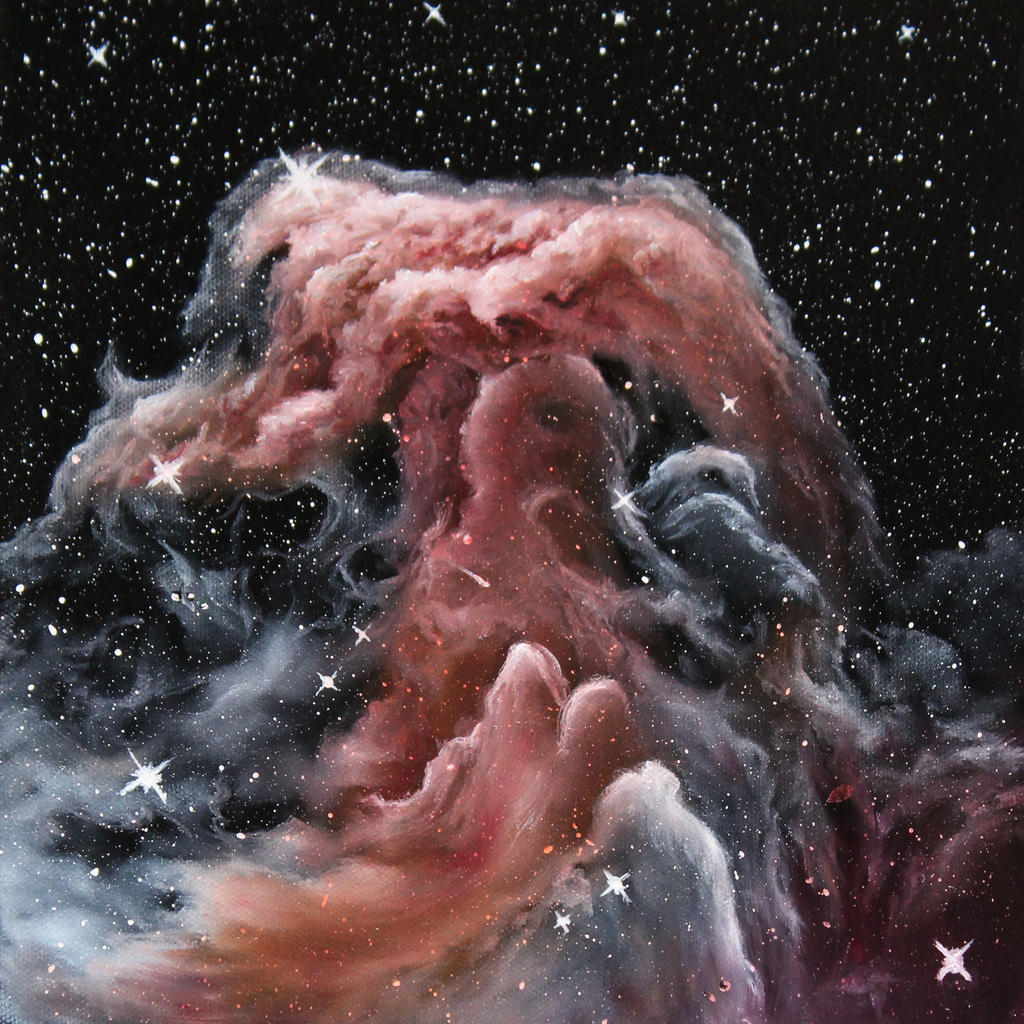 6. **Horsehead Nebula**: A negative image highlights the silhouette of the horsehead against the surrounding nebula.The Horsehead Nebula, also known as Barnard 33 (B33), is a dark nebula located in the Orion constellation. It is part of the larger Orion Molecular Cloud Complex, which is a region of active star formation. Here are some key features of the Horsehead Nebula:
6. **Horsehead Nebula**: A negative image highlights the silhouette of the horsehead against the surrounding nebula.The Horsehead Nebula, also known as Barnard 33 (B33), is a dark nebula located in the Orion constellation. It is part of the larger Orion Molecular Cloud Complex, which is a region of active star formation. Here are some key features of the Horsehead Nebula:### Key Features of the Horsehead Nebula:
1. **Appearance**: The Horsehead Nebula is named for its distinctive shape, which resembles the head of a horse when viewed from Earth. It is a dark nebula, meaning it is a dense cloud of dust and gas that obscures the light from the background stars.
2. **Location**: The Horsehead Nebula is located just to the south of the star Alnitak, which is the easternmost star in Orion's Belt.
3. **Size**: The Horsehead Nebula is relatively small compared to other nebulae, spanning about 3 light-years across.
4. **Dark Nebula**: The Horsehead Nebula is primarily a dark nebula, but it is illuminated by the nearby bright star Sigma Orionis, which causes it to stand out against the background of the Orion Molecular Cloud Complex.
5. **Observational History**: The Horsehead Nebula was first photographed in 1888 by Scottish astronomer Williamina Fleming. It was later cataloged by American astronomer Edward Barnard, who included it as number 33 in his catalog of dark nebulae.
6. **Visibility**: The Horsehead Nebula is a challenging object to observe visually, as it requires a large telescope and dark skies. It is best observed using long-exposure astrophotography, which can reveal the intricate details of its structure.
Overall, the Horsehead Nebula is a fascinating object in the night sky, known for its striking appearance and its role as a stellar nursery, where new stars are born.
7. **Sombrero Galaxy**: The negative image accentuates the bright core and the dark dust lane around this galaxy. The Sombrero Galaxy, also known as Messier 104 (M104), is a spiral galaxy located in the constellation Virgo. It is named for its resemblance to a wide-brimmed hat, with a bright central bulge surrounded by a dark, dusty disk. Here are some key features of the Sombrero Galaxy:
### Key Features of the Sombrero Galaxy:
1. **Appearance**: The Sombrero Galaxy is classified as a spiral galaxy and is seen nearly edge-on from Earth. Its prominent central bulge gives it the appearance of a sombrero or Mexican hat.
2. **Size**: The Sombrero Galaxy is relatively large, with a diameter of about 50,000 light-years, making it slightly larger than our Milky Way galaxy.
3. **Bulge and Disk**: The central bulge of the Sombrero Galaxy contains older stars, while the disk is populated by younger stars and dust lanes that obscure some of the galaxy's light.
4. **Nuclear Ring**: Surrounding the central bulge is a prominent nuclear ring of stars, gas, and dust, which is thought to be a site of active star formation.
5. **Supermassive Black Hole**: Like many galaxies, the Sombrero Galaxy is believed to harbor a supermassive black hole at its center, which is responsible for the high-energy radiation emitted from the galaxy's core.
6. **Distance**: The Sombrero Galaxy is located approximately 28 million light-years away from Earth, making it relatively nearby in astronomical terms.
7. **Observational History**: The Sombrero Galaxy was discovered by French astronomer Pierre Méchain in 1781 and was later cataloged by Charles Messier as the 104th object in his catalog of non-stellar objects.
8. **Visibility**: The Sombrero Galaxy is a popular target for amateur astronomers, as it is bright and relatively easy to observe with a moderate-sized telescope. Its distinctive appearance makes it a favorite among stargazers and astrophotographers.
Overall, the Sombrero Galaxy is a fascinating object in the night sky, known for its striking appearance and its importance in the study of galaxy formation and evolution.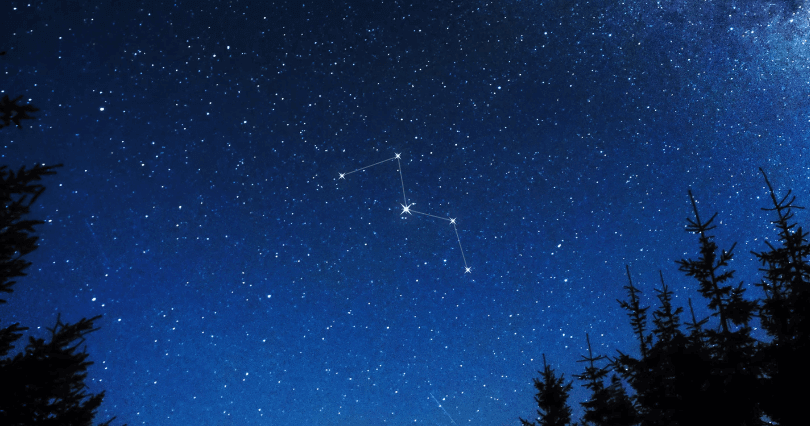
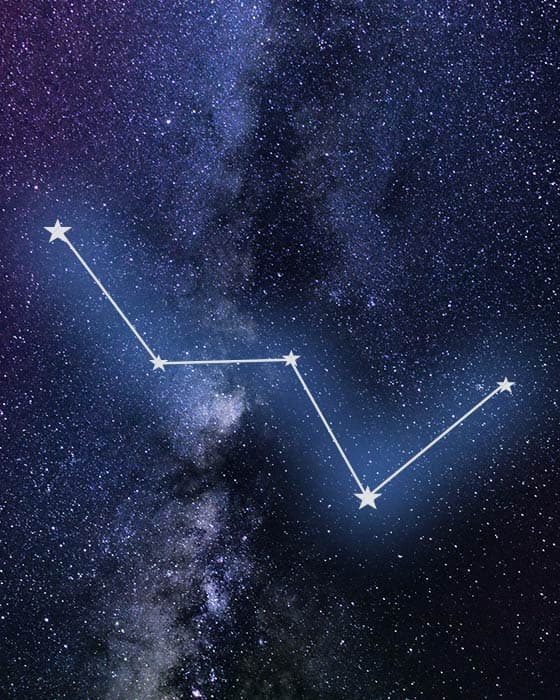 8. **Cassiopeia A**: Inverting this supernova remnant image reveals detailed structures and shock waves.Cassiopeia A (Cas A) is a supernova remnant (SNR) located in the constellation Cassiopeia. It is the remnant of a massive star that exploded in a supernova event, which was observed on Earth approximately 300 years ago, around the year 1680.
8. **Cassiopeia A**: Inverting this supernova remnant image reveals detailed structures and shock waves.Cassiopeia A (Cas A) is a supernova remnant (SNR) located in the constellation Cassiopeia. It is the remnant of a massive star that exploded in a supernova event, which was observed on Earth approximately 300 years ago, around the year 1680.

 8. **Cassiopeia A**: Inverting this supernova remnant image reveals detailed structures and shock waves.Cassiopeia A (Cas A) is a supernova remnant (SNR) located in the constellation Cassiopeia. It is the remnant of a massive star that exploded in a supernova event, which was observed on Earth approximately 300 years ago, around the year 1680.
8. **Cassiopeia A**: Inverting this supernova remnant image reveals detailed structures and shock waves.Cassiopeia A (Cas A) is a supernova remnant (SNR) located in the constellation Cassiopeia. It is the remnant of a massive star that exploded in a supernova event, which was observed on Earth approximately 300 years ago, around the year 1680.### Key Features of Cassiopeia A:
1. **Supernova Event**: The supernova that created Cassiopeia A is estimated to have occurred about 11,000 years ago from our perspective. However, the light from the supernova took about 300 years to reach Earth, making the event appear to have happened around the year 1680.
2. **Remnant Structure**: Cassiopeia A is one of the youngest and most well-studied supernova remnants in the Milky Way galaxy. It has a complex structure, with a central compact object, likely a neutron star, surrounded by an expanding shell of debris from the exploded star.
3. **Neutron Star**: The central compact object in Cassiopeia A is believed to be a neutron star, which is the collapsed core of the massive star that underwent the supernova explosion. Neutron stars are incredibly dense, with the mass of about 1.4 times that of the Sun packed into a sphere only about 20 kilometers (12 miles) in diameter.
4. **Energetic Phenomena**: Cassiopeia A is known for its high-energy emissions, including X-rays and gamma rays, which are produced as the supernova remnant interacts with surrounding interstellar gas and magnetic fields.
5. **Observational History**: Cassiopeia A was first identified as a radio source in 1947. Subsequent observations across the electromagnetic spectrum, from radio waves to X-rays, have revealed detailed information about its structure and composition.
6. **Scientific Importance**: Studying Cassiopeia A provides valuable insights into the processes of stellar evolution, supernova explosions, and the formation of neutron stars. It also helps astronomers understand the distribution of elements in the universe, as supernova explosions are important sources of heavy elements like iron.
Cassiopeia A is a prominent object in the study of supernova remnants and has contributed significantly to our understanding of the life cycles of massive stars.
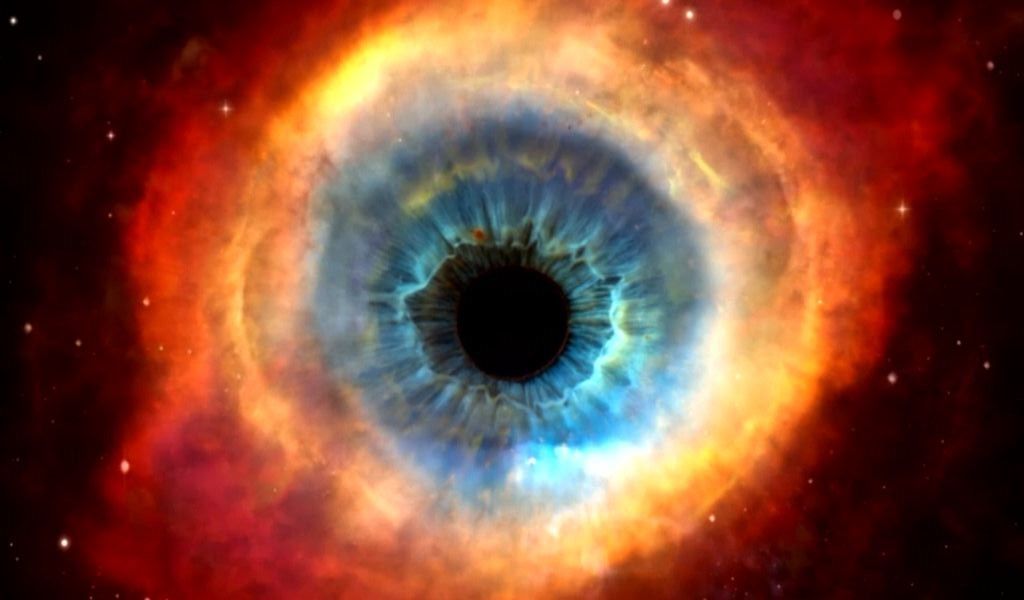
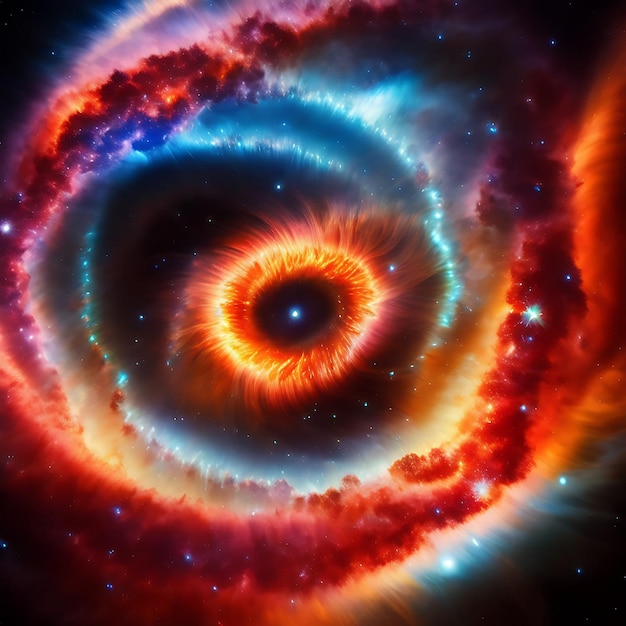 9. **Helix Nebula**: The "Eye of God" in a negative image shows the complex, layered structure of this planetary nebula.Cassiopeia A (Cas A) is a supernova remnant (SNR) located in the constellation Cassiopeia. It is the remnant of a massive star that exploded in a supernova event, which was observed on Earth approximately 300 years ago, around the year 1680.
9. **Helix Nebula**: The "Eye of God" in a negative image shows the complex, layered structure of this planetary nebula.Cassiopeia A (Cas A) is a supernova remnant (SNR) located in the constellation Cassiopeia. It is the remnant of a massive star that exploded in a supernova event, which was observed on Earth approximately 300 years ago, around the year 1680.### Key Features of Cassiopeia A:
1. **Supernova Event**: The supernova that created Cassiopeia A is estimated to have occurred about 11,000 years ago from our perspective. However, the light from the supernova took about 300 years to reach Earth, making the event appear to have happened around the year 1680.
2. **Remnant Structure**: Cassiopeia A is one of the youngest and most well-studied supernova remnants in the Milky Way galaxy. It has a complex structure, with a central compact object, likely a neutron star, surrounded by an expanding shell of debris from the exploded star.
3. **Neutron Star**: The central compact object in Cassiopeia A is believed to be a neutron star, which is the collapsed core of the massive star that underwent the supernova explosion. Neutron stars are incredibly dense, with the mass of about 1.4 times that of the Sun packed into a sphere only about 20 kilometers (12 miles) in diameter.
4. **Energetic Phenomena**: Cassiopeia A is known for its high-energy emissions, including X-rays and gamma rays, which are produced as the supernova remnant interacts with surrounding interstellar gas and magnetic fields.
5. **Observational History**: Cassiopeia A was first identified as a radio source in 1947. Subsequent observations across the electromagnetic spectrum, from radio waves to X-rays, have revealed detailed information about its structure and composition.
6. **Scientific Importance**: Studying Cassiopeia A provides valuable insights into the processes of stellar evolution, supernova explosions, and the formation of neutron stars. It also helps astronomers understand the distribution of elements in the universe, as supernova explosions are important sources of heavy elements like iron.
Cassiopeia A is a prominent object in the study of supernova remnants and has contributed significantly to our understanding of the life cycles of massive stars.
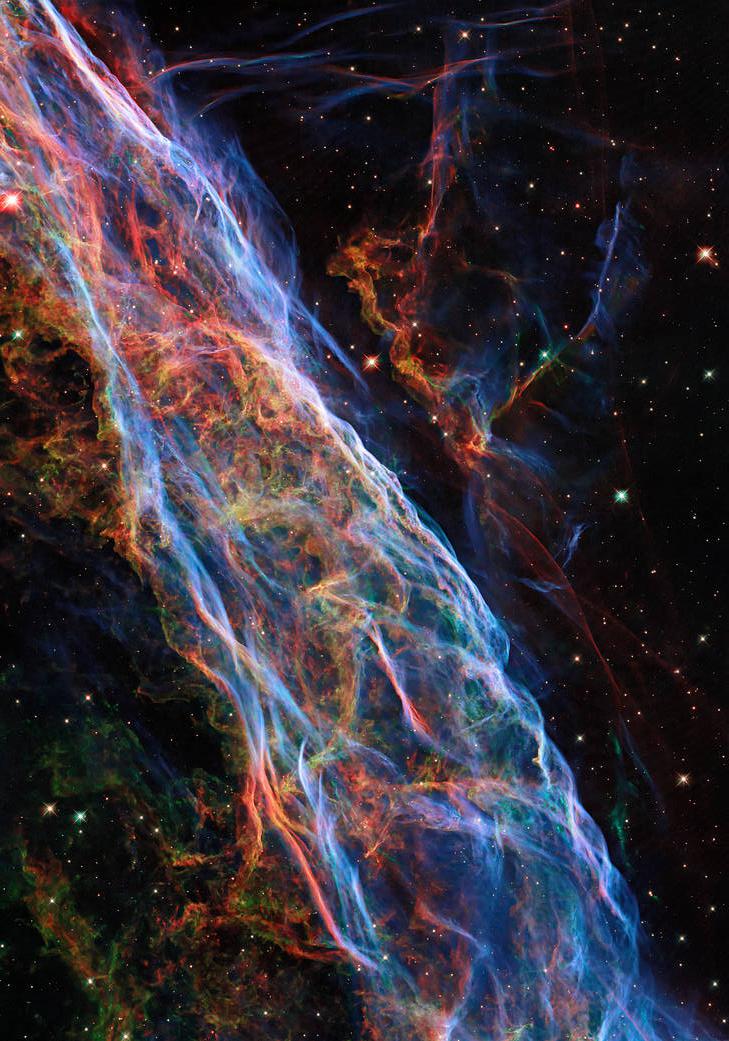 10. **Veil Nebula**: This supernova remnant's delicate filaments are more pronounced in a negative image, showcasing the intricate patterns.The Vela Supernova Remnant, also known as the Vela Nebula, is a large and complex supernova remnant located in the constellation Vela. It is the result of a supernova explosion that occurred about 11,000 to 12,300 years ago, making it one of the youngest known supernova remnants in the Milky Way galaxy.
10. **Veil Nebula**: This supernova remnant's delicate filaments are more pronounced in a negative image, showcasing the intricate patterns.The Vela Supernova Remnant, also known as the Vela Nebula, is a large and complex supernova remnant located in the constellation Vela. It is the result of a supernova explosion that occurred about 11,000 to 12,300 years ago, making it one of the youngest known supernova remnants in the Milky Way galaxy. ### Key Features of the Vela Supernova Remnant:
1. **Origin**: The Vela Supernova Remnant was formed from the remnants of a massive star that underwent a supernova explosion. This explosion expelled the outer layers of the star into space, creating the nebula we see today.
2. **Size**: The Vela Supernova Remnant is one of the largest and most massive supernova remnants known, spanning an area of about 8 degrees in the sky, which is roughly 16 times the apparent size of the full moon.
3. **Structure**: The remnant has a complex and filamentary structure, with shock waves from the supernova explosion interacting with surrounding interstellar gas and dust, creating intricate patterns of emission and absorption.
4. **Pulsars**: The Vela Supernova Remnant contains several pulsars, which are rapidly rotating neutron stars that emit beams of radiation. These pulsars are believed to be the remnants of the collapsed core of the original star.
5. **Observational History**: The Vela Supernova Remnant was first identified in the 1960s through observations of its radio emissions. It has since been studied across the electromagnetic spectrum, from radio waves to X-rays.
6. **Scientific Importance**: Studying the Vela Supernova Remnant provides valuable insights into the processes of supernova explosions, the dynamics of shock waves in interstellar space, and the formation of neutron stars.
7. **Visibility**: The Vela Supernova Remnant is best observed from the southern hemisphere, where it is visible to the naked eye as a faint, elongated cloud of gas and dust.
Overall, the Vela Supernova Remnant is a fascinating object in the night sky, offering astronomers a glimpse into the violent processes that shape the universe







